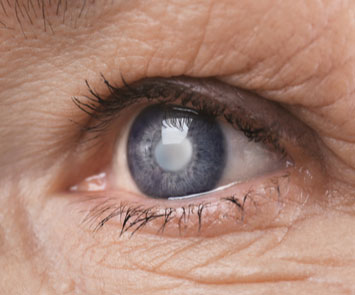Glaucoma Surgery Treatment
What is Glaucoma?
Glaucoma is a condition in which the fluid which is produced by the eye – known as the aqueous humour – does not drain away normally and this results in increased pressure inside the eye. If this condition is not treated, it can lead to damage of the optic nerve which connects the eye to the brain and loss of vision.
Signs and Symptoms
Glaucoma does not present symptoms until late stages, when it can cause damage to your field of vision. It generally starts at the periphery of the field of vision and then leads to a gradual narrowing or tunneling of the vision. If treatment is delayed, these defects can severely affect your vision and can cause “tunnel vision”.
Importance of Early Diagnosis
Early treatment can prevent damage from occurring, however, any damage that occurs is permanent. Therefore it is very important to diagnose the condition early to maintain the maximum level of peripheral vision. Risk factors for Glaucoma include short sightedness, diabetes and people with a family history.
If there is a history of glaucoma in your immediate family then regular eye checks are essential. Ideally, everyone over the age of 40 should have an eye test for glaucoma.
Tests for Glaucoma
At Moorfields Eye Hospital Dubai we have the latest equipment for diagnosing and staging glaucoma.
Pressure Check
A local anaesthetic drop which lasts only for 10-20 minutes will be placed in both eyes, then a small instrument is placed gently against the eye. This will measure the pressure inside the eye. Alternatively the pressure may be checked using air. A small puff of air is blown into your eye, this is not painful and gives a quick and accurate measurement of the pressure.
Pachymetry
This measures the thickness of the cornea by means of an ultrasound probe. It has proven to be important in determining precisely the Intraocular pressure.
Treatment
The treatment for Glaucoma focuses on reducing the pressure inside the eye, by lowering the amount of fluid being produced or by improving the drainage of the fluid away from the eye.
The usual treatment
is with eye drops that best suit your case. If you are prescribed eye drops, they must be taken regularly and according to the prescribed doses.
In cases resistant to medical treatment, surgery may need to be performed.
Ask our staff for glaucoma screening and follow-up packages which conveniently include all the above tests.
General Examination
The examination includes looking directly at the optic nerve at the back of the eye for any signs of damage.
Visual Field Testing
The peripheral vision is tested to see whether there has been any loss of vision at the outer edge of the field of vision.
Optical Coherence
Detecting Glaucoma early, before symptoms are apparent, is important and Tomography helps achieve this and so reduces the risk of any damage to the optic nerve.
